Arts across the Irish border are bridging the political divide
A century since partition, Northern Ireland is still a question with no easy answers. And Brexit just made it harder. William Cook meets the artists who are working to reconcile the past

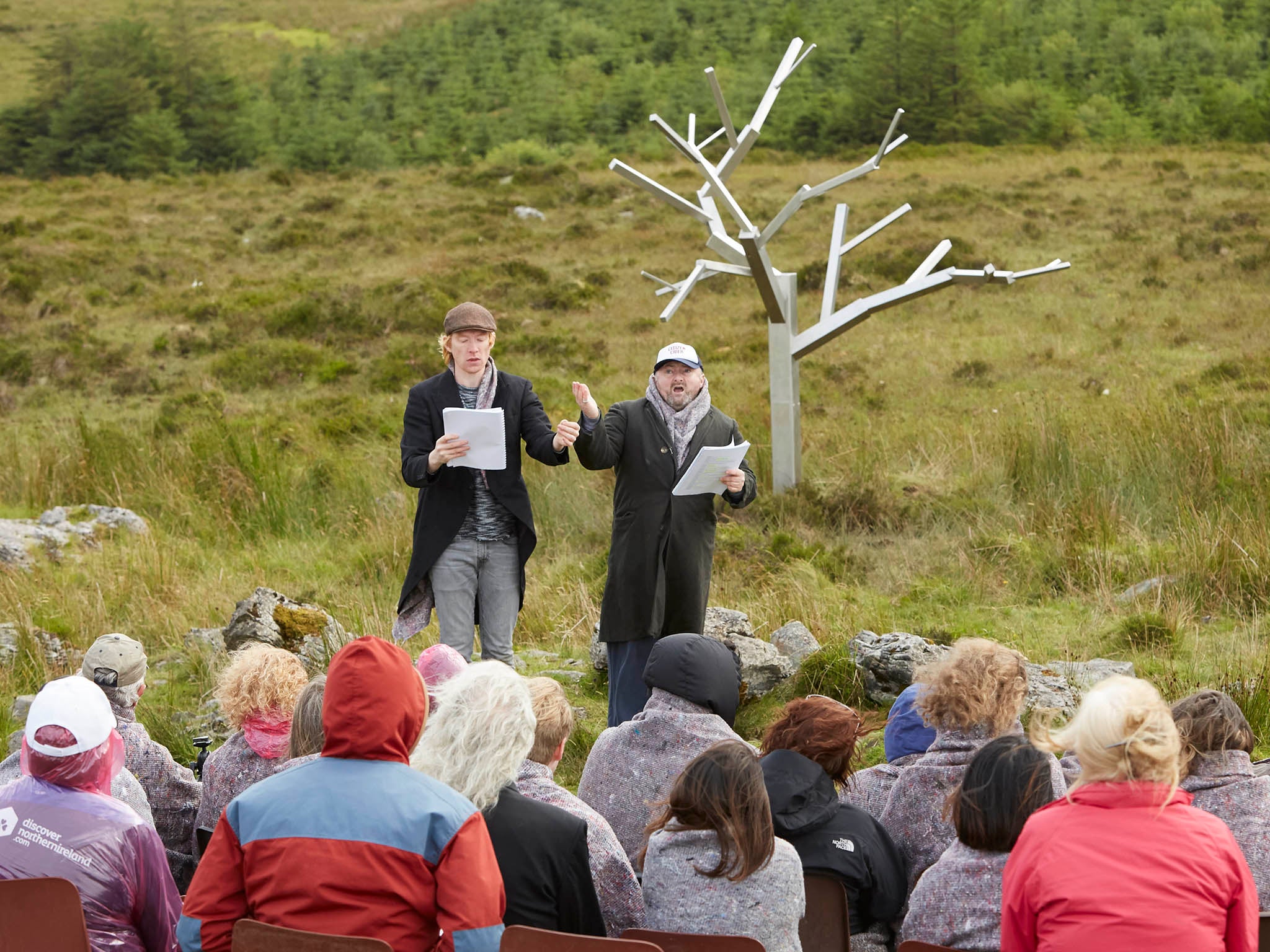
Anniversaries are an awkward business in Northern Ireland – a place where the same dates can mean completely different things, depending on which community you come from. For nationalists, 2016 was the centenary of the Easter Rising. For unionists, it was the centenary of the Battle of the Somme. However, 2021 marks a centenary of equal significance for both traditions, even though unionists and nationalists are bound to view it in very different ways. A century ago, Ireland was divided by a new border, between Northern Ireland and Southern Ireland. A hundred years later, people along the border are still living with the consequences of that divide.
Much has changed since 1921, on both sides of the border. After a war of independence and a civil war, Southern Ireland became the Irish Free State, a dominion of the British Commonwealth, and then an independent republic. Ruled from Stormont and then Westminster and now from Stormont again, Northern Ireland endured 30 years of virtual civil war. Yet for all the changes that have occurred, in Northern Ireland and the Irish Republic, the border still follows the same zigzag path from coast to coast – a symbol of safety and security for some, a symbol of division and oppression for others.
During that virtual civil war, aka the Troubles, the Irish border was overt – army checkpoints on the major roads, minor roads rendered impassable. Five hundred kilometres long, bisecting farms and villages, it was impossible to police effectively, yet it remained a looming presence: a painful reminder for Irish nationalists that their homeland was divided; a painful reminder for Ulster unionists that their homeland was not at peace.
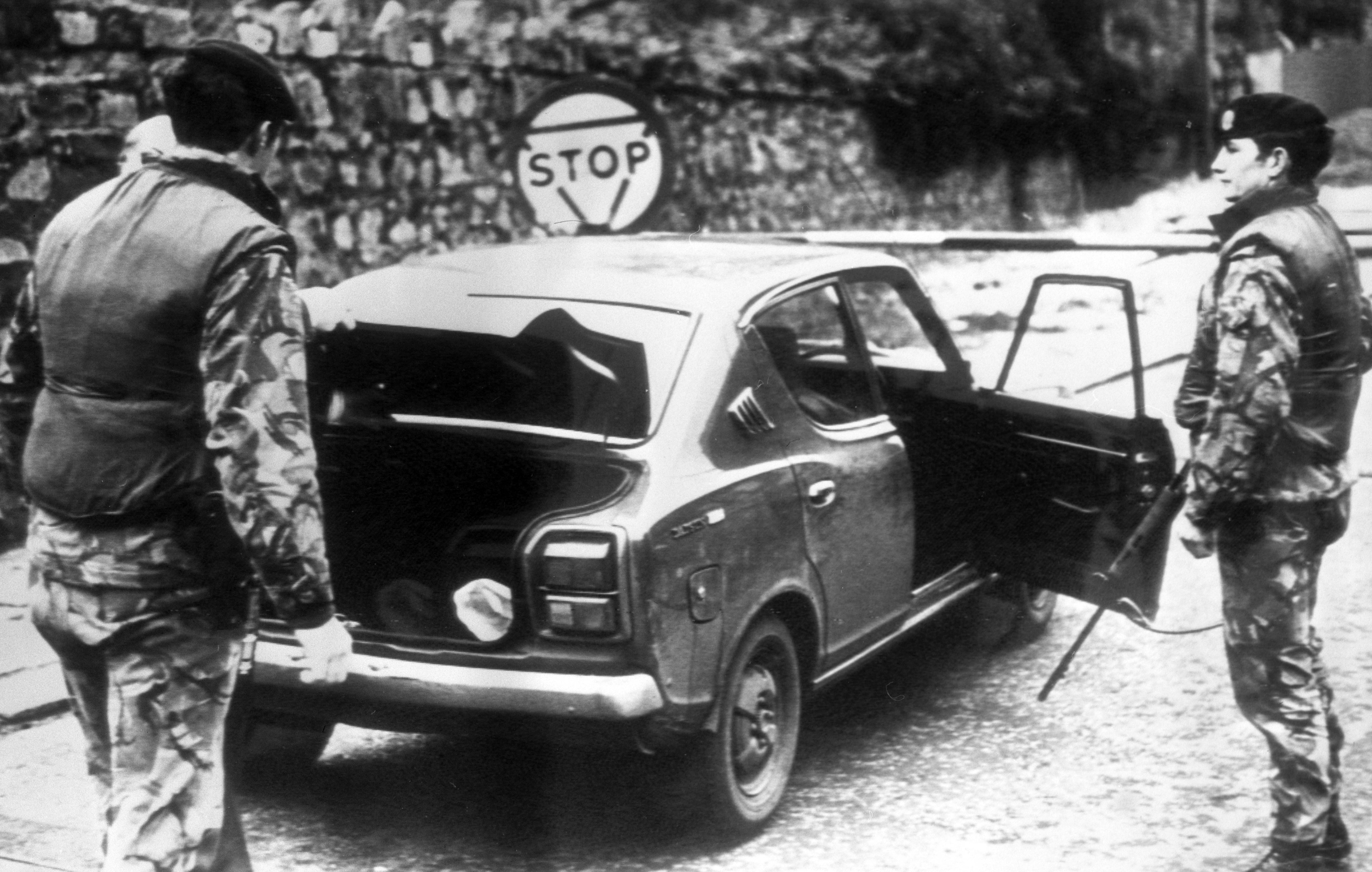
Since the Good Friday Agreement in 1998, and the peace process it initiated, the border has become virtually invisible. Different road signs are now the only clue that you’ve crossed an international frontier. Yet Brexit has created fresh anxieties about the future status of the border. Now that Northern Ireland has left the European Union (despite voting by 56 per cent to 44 per cent to remain), a soft border between two EU members has been replaced by a major boundary of the EU. Immediate headaches have been allayed by Britain’s exit deal, which put a new customs border in the Irish Sea, but the long-term implications are seismic.
Read More:
For all its faults and limitations, EU membership represented a kind of compromise for both communities in Northern Ireland. Now neither community is happy. Nationalists are unhappy about Brexit; unionists are unhappy about the Brexit deal. Nationalists are further away from Europe; unionists are further away from Britain. A century since partition, Northern Ireland is still a question with no easy answers.
The partition of Ireland was an imperfect response to an intractable problem: what to do about the million (or so) unionists on the island of Ireland, who wanted to remain British after Ireland secured home rule? Most – though by no means all – of these unionists lived in the northeast of Ireland, an area which had been colonised by British settlers in the 17th century.
A hundred years since partition, after 20 years of gradual softening, is the Irish border about to become hard once again?
After 300 years in Ireland, this community still largely identified as British. Therefore, the British government resolved to give them a province of their own. Of Ireland’s 32 counties, 26 formed a new and separate state, which eventually became the Republic of Ireland. The other six remained (and remain) part of the United Kingdom. Partition averted the immediate threat of civil war (many unionists were willing to take up arms to remain in the UK), but it sowed the seeds for a century of discontent to come.
There was nothing automatic about the shape of Northern Ireland, or the new border that surrounded it. A lot of unionists called it Ulster, but the province of Ulster comprised nine counties. To create a state with a clear Protestant majority, Cavan, Monaghan and Donegal were excluded, on account of their largely Catholic populations. Yet the six counties that became Northern Ireland still contained around half a million Catholics, about a third of the population – a large minority, but not large enough to shape the development of this new state. Protestants and Catholics have been suffering from the repercussions of this imbalance ever since.
The Good Friday Agreement was a valiant attempt to address this imbalance and alleviate the suffering – for both communities – by creating a new environment in which both traditions could co-exist. Sure, there’s still a long way to go, but paramilitary violence is a fraction of what it was before the peace process. Northern Ireland has been transformed.
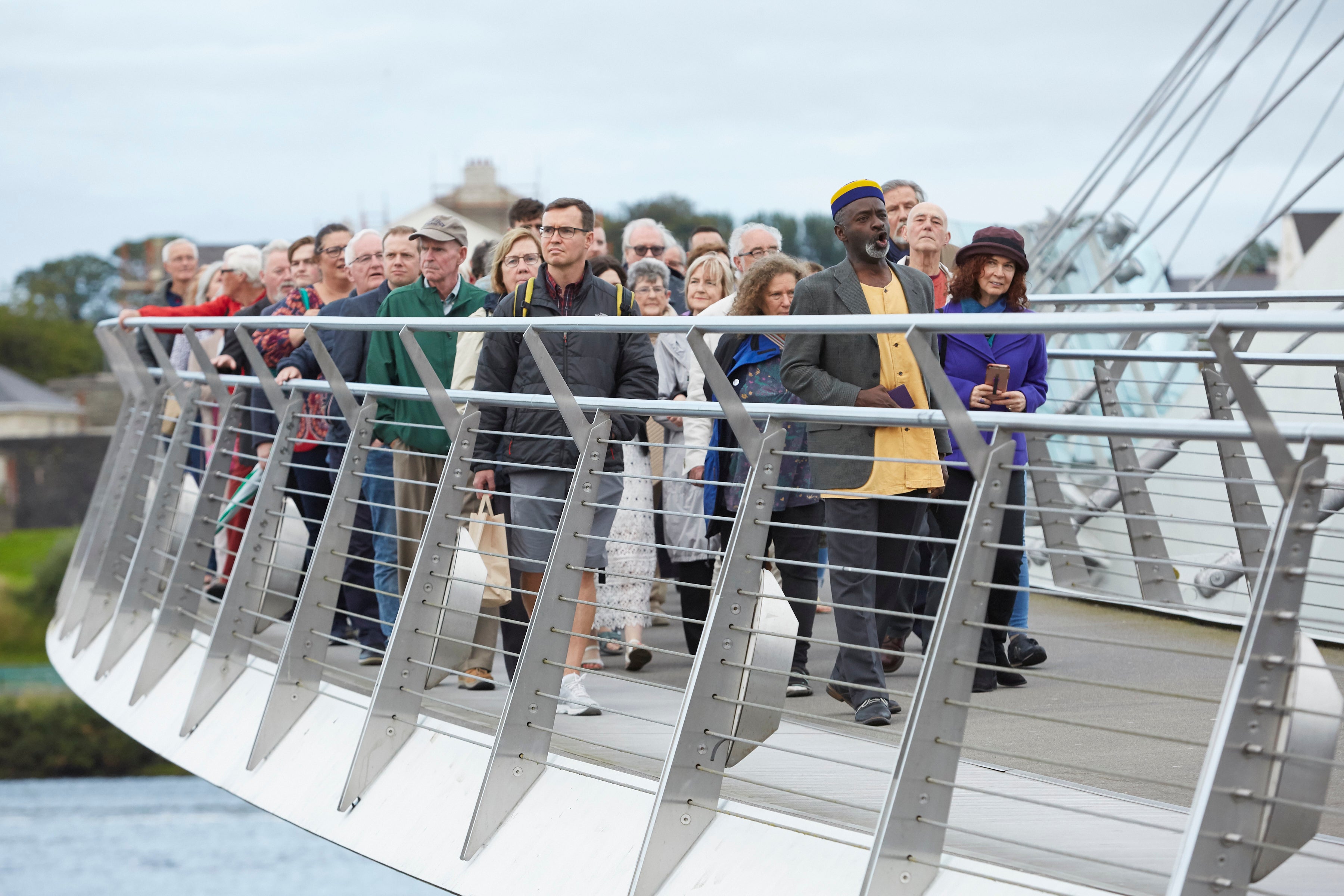
But what about the border? The great blessing of the Good Friday Agreement and the peace that followed was that people living in these borderlands could adopt either identity. They could be British or Irish, or both or neither. They no longer had to pick a side. The fact that both Britain and Ireland were in the EU made this accommodation a lot easier. EU funding was a big help too.
“The European Union has been a wholly good thing for us,” says the writer Carlo Gebler, who lives in Enniskillen. “It has poured money, intelligently, into all sorts of things, hundreds of community projects – and now all of this is going.” A hundred years since partition, after 20 years of gradual softening, is the Irish border about to become hard once again?
I’ve been a fairly frequent visitor to Northern Ireland these past 20 years (I only went once before the ceasefire – it felt like a very different place). I’ve been all over and met all sorts of people. I like it more each time I go. I won’t pretend my experience has been comprehensive. It’s been no substitute for living there – a series of fleeting snapshots, that’s all. Yet each time I go I’m inspired by the people I encounter – people who are working to build bridges between communities – and some of the most inspiring people I’ve met have been people working in the arts.
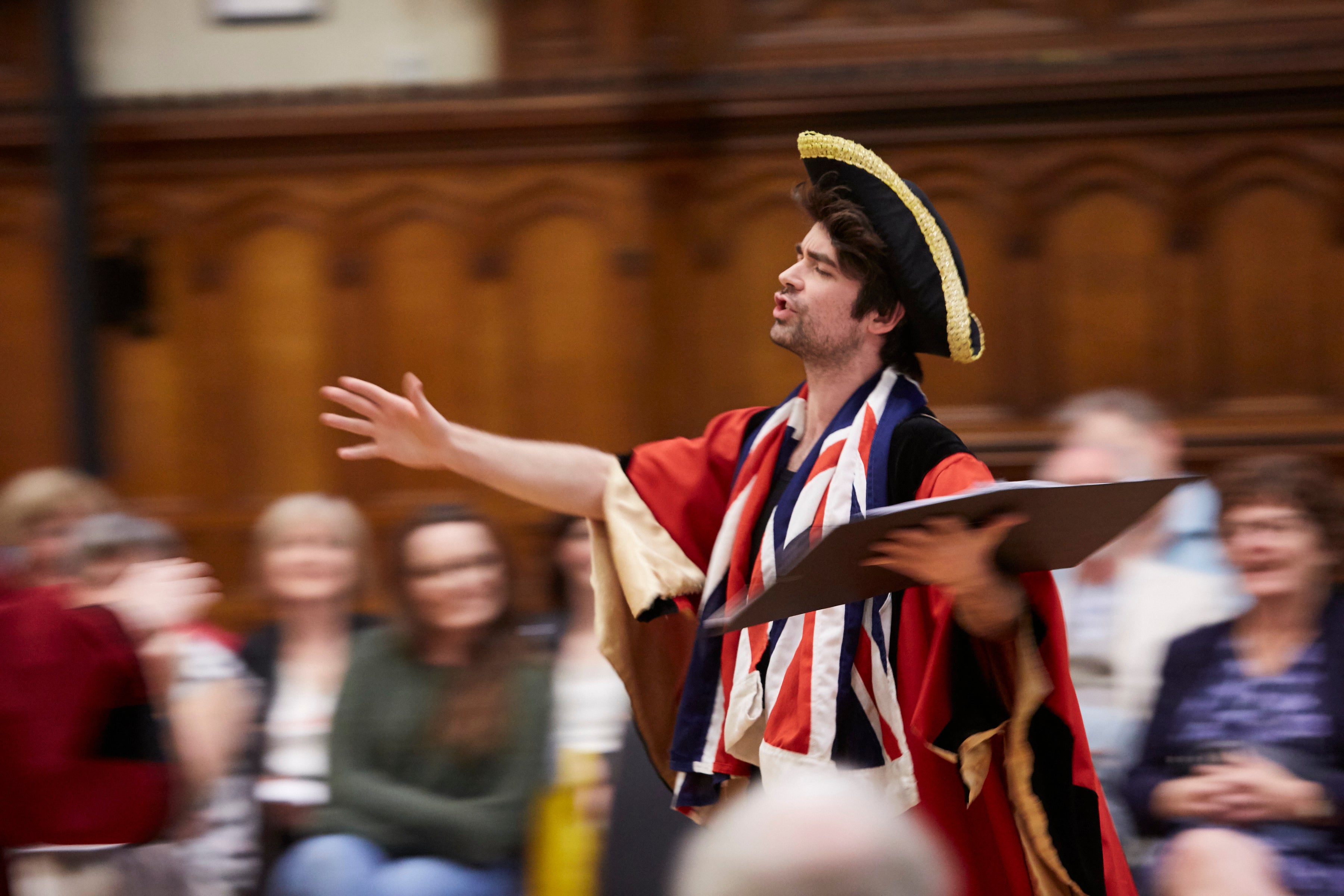
If you were to write a list of key workers in any peace process, I guess artists probably wouldn’t be that near the top of your list. Of course politicians are crucial, but what I’ve seen in Northern Ireland is that the arts are important too. The arts create a safe space free from the polarisation of party politics.
Unlike politicians, artists don’t need to appeal to the lowest common denominator. I witnessed this in 2000, when Danny Devenny, a former republican prisoner, and Noel Large, a former loyalist prisoner, shared a platform at Belfast’s Ulster Museum to discuss mural-making in Northern Ireland (Devenny later teamed up with Mark Ervine, son of the late loyalist leader David Ervine, to paint a mural of Picasso’s Guernica on Belfast’s Catholic Falls Road).
I’m there to try and make things better – not to make things worse. I think art is the way to do it
There are many other artistic initiatives in Northern Ireland, which are less dramatic, but no less important; discreet, inclusive projects that bring people from both communities together. One of the most remarkable is Arts Over Borders, a company which champions the work of writers from the Irish borderlands, through performances of their writing in the places where they lived and worked. They mount productions in Ulster – on both sides of the border – which celebrate the shared heritage of the peoples in these borderlands.
One of Arts Over Borders’ most ambitious ventures is Frielfest, a celebration of the plays of Brian Friel. Friel spent the first half of his life in Northern Ireland and the second half of his life in Donegal, and the festival crisscrosses the border, mounting performances in places rich with history. On the Walls of Derry, overlooking the Bogside, I saw a recital of The Iliad (Friel adored Homer) which conjured up images of the Siege of Derry, the Siege of Troy, the Battle of the Bogside and Bloody Sunday.
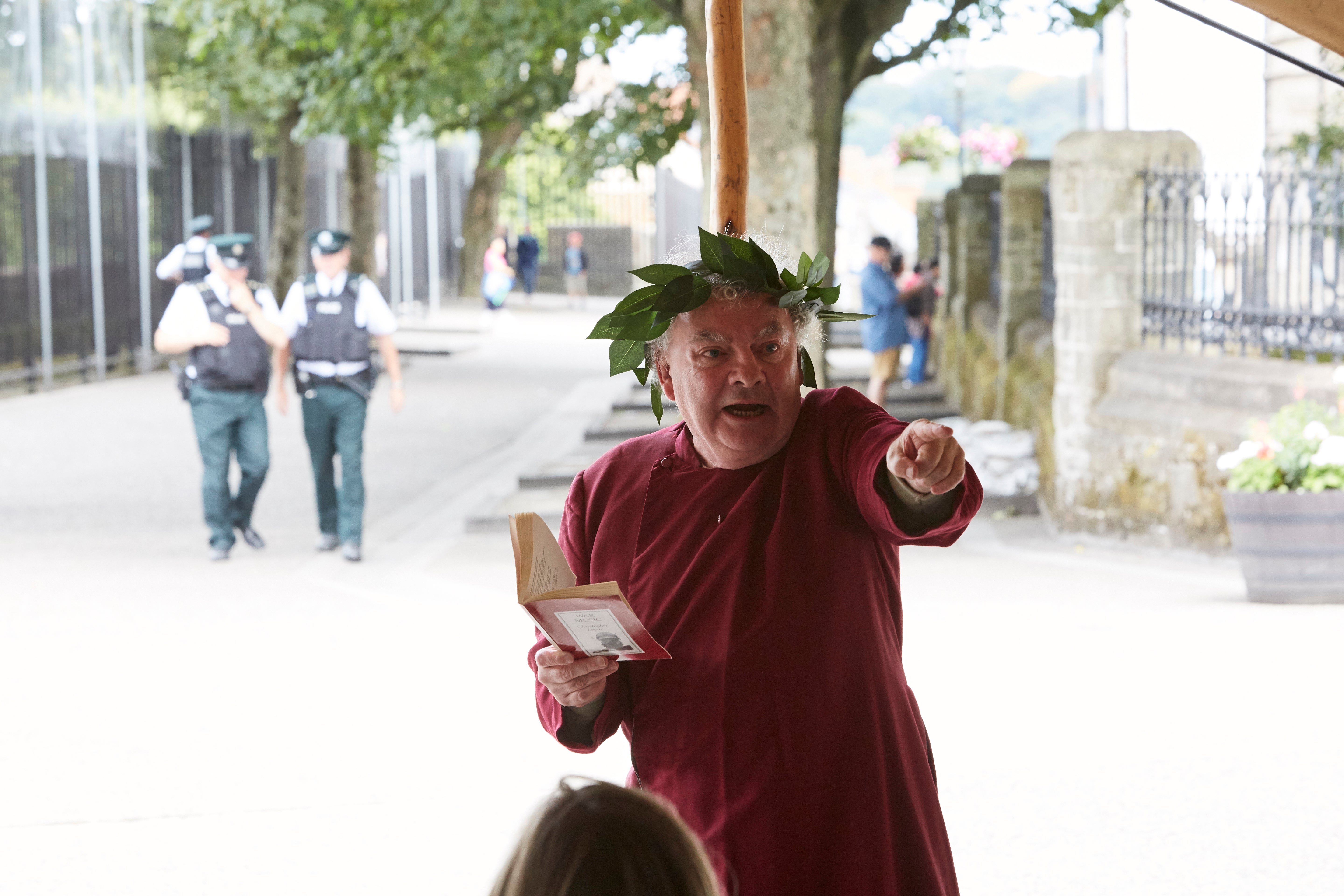
It was August and the Apprentice Boys were staging their biannual parade. The cacophony of flutes and drums provided the perfect soundtrack for Homer’s warlike tale. The Apprentice Boys Parade is the acme of loyalist pageantry in Northern Ireland, commemorating the boys who shut the gates of Derry against the Catholic army of King James. Inevitably, during the Troubles, this parade was a focus for considerable tension – a grand day out for Protestants, but hardly a mainstream tourist attraction. Yet today it feels like folk culture, rather than sectarian triumphalism. It’s a sign of how Derry has changed, and how the arts have played a part.
One of the people I met on the Walls of Derry that day was Jonathan Burgess, a pioneering playwright and producer – and an Apprentice Boy. He was born and raised in Derry. He still lives there today. “I was born two weeks after Bloody Sunday,” he tells me, “on a street called Abercorn Road that was about 300 yards from where most of the activity took place on that day. About three or four months after that there was a soldier shot at our front door.”
For his father, that was the last straw. Jonathan’s family moved across the river to the Waterside – part of an exodus of Protestant families from the city centre, an exodus he revisited in one of his plays. “Ironically, about 15 months after that our house was blown up by an IRA car bomb, so even though we came to the Waterside the situation didn’t improve dramatically.”
Derry has come a long way since then, and Jonathan has played his part. For the past 15 years he’s directed and produced the annual pantomime at Derry’s Millennium Forum. Last year, it was seen by 30,000 people.

Since Covid struck, he’s been doing street theatre in housing estates around Derry. He’s also involved in the Maiden City Festival here in Derry (Protestants call Derry the Maiden City because its walls were never breached). Organised by the Apprentice Boys, this annual festival has opened up the Protestant culture of Northern Ireland to outsiders, showcasing popular art forms associated with the Protestant community – not just flute bands but also Bluegrass music and Highland dancing. Re-enactments on the city walls reposition the Siege of Derry as a historical event, rather than loyalist folklore. “The ethos behind it is to reach out and explain, and educate and entertain,” he says.
“At the start of my career I observed the Catholic community, the nationalist community, telling their own story,” Jonathan tells me. “That was something my community failed to do.” His plays explore the Protestant experience, but he’s not just preaching to the converted. His play about the Royal Ulster Constabulary, Crows on The Wire, encouraged nationalists to take a more sympathetic view of the RUC. “I’m there to try and make things better – not to make things worse,” he says. “I think art is the way to do it.”
You have political parties that operate from polarised positions and they’re scared s***less to leave them... so you’re left with an absence of politics in the middle ground. The arts can occupy this middle ground
He’s now working with the Church of Ireland on a promenade performance called The Walled City Passion – the Easter story, re-enacted on the Walls of Derry, a spectacular arena for a passion play. As Jonathan says, these 400-year-old ramparts make a wonderful open-air theatre. The fact that he’s even contemplating such a project is another sign of how things have changed. During the Troubles, the Walls of Derry were a no-go area. Though he grew up in the city, he didn’t walk along them until he was 19.
Jonathan’s work is a great example of what the arts can do in Northern Ireland that party politics can’t. “You have political parties that operate from polarised positions and they’re scared s***less to leave them,” he argues. “The problem is that you’re left with an absence of politics in the middle ground.” The arts can occupy this middle ground, and the Apprentice Boys’ Maiden City Festival is a case in point. “They want to be integrated,” he says, of the Apprentice Boys. “They don’t want their story demonised and marginalised.”
Following Arts Over Borders to Derry for Frielfest is an ideal way to learn more about this troubled corner of the British Isles. An equally enlightening odyssey is to follow Arts Over Borders to Enniskillen for Happy Days. Happy Days is a summer festival devoted to Samuel Beckett, who went to Portora Royal School in Enniskillen (Arts Over Borders also stages a spring festival called Wilde Weekend, devoted to Oscar Wilde, who also attended Portora Royal School).

For both these literary festivals, Arts Over Borders mounts performances in all sorts of ad hoc spaces, a policy which acquires an added significance in Northern Ireland. By using venues like the Catholic church, the Masonic lodge, the Methodist hall and the PSNI station, they’re bringing audiences into places formerly seen by many as off-limits.
Arts Over Borders was inspired by famous international festivals in Edinburgh, Salzburg and Avignon – all post-conflict festivals, all set up to bring war-torn peoples back together. It’s the brainchild of Sean Doran and Liam Browne, who were both born in Derry in 1960 and grew up in the city during some of the worst days of the Troubles.
Sean worked in Australia for a long while, where he was inspired by the Aboriginal interaction between art and poetry and landscape. When he returned home he made a map of all the writers who’d lived and worked in Ireland’s borderlands: not only Friel, Wilde and Beckett, but also Seamus Heaney and Flann O’Brien, Jonathan Swift and Patrick Kavanagh, CS Lewis and WB Yeats… the list went on and on.
Sean realised he was on to something. These timeless writers stood apart from the Troubles. Their distance from the present made them accessible to both communities. “Literature is something that unites us more strongly than what divides us,” says Sean, and he’s right. Literature can inhabit that contested no man’s land between Northern Ireland’s entrenched positions. It can express universal truths which resonate with audiences from either side.
Literature is something that unites us more strongly than what divides us. You can do things without being provocative that could still be perceived as challenging
“You can do things without being provocative that could still be perceived as challenging,” says Sean’s creative partner, Liam. “You don’t have to hammer home anything. For something to be nuanced is enough. Audiences get it – you just need that space for people to interpret or consider something as they want to. You’re not saying to them, ‘This is the way you have to think about it’.”
And audiences from both sides of the border have lapped it up. “A considerable number of people crossed from the Republic into Northern Ireland for the first time in their lives to attend events at the festival, which is absolutely extraordinary. They’d never crossed the border before.”
The positive effect of Arts Over Borders has been particularly pronounced in Enniskillen. To many outsiders, the name of this handsome, historic town is still synonymous with the IRA Remembrance Day bombing of 1987, which killed 11 people and injured over 60 more. Arts Over Borders events like Happy Days and the Wilde Weekend have helped to give Enniskillen a different identity beyond the Troubles – “a place where exchanges can happen, where audiences and artists can meet and there’s no political dimension to it,” as Liam puts it – a creative destination that now attracts performers and spectators from all over Ireland, and beyond.
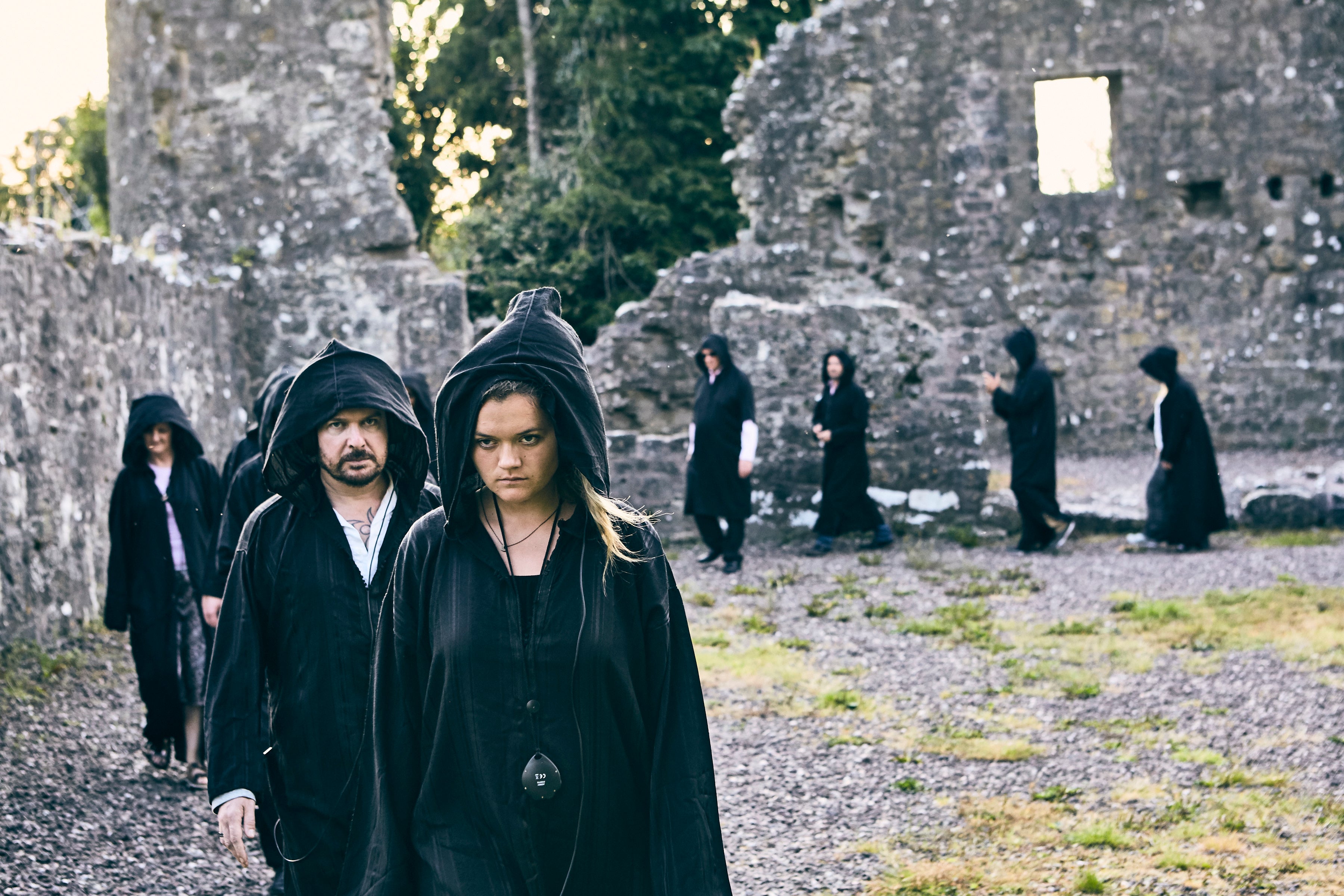
“There was a real sense here of not wanting to be defined by that atrocity,” says Sally Rees, who teaches creative and expressive arts at the school (now called Enniskillen Royal Grammar School) where Beckett and Wilde were pupils. Sally was born and raised in Enniskillen. She went away to university, in Glasgow, worked in England, and returned home 14 years ago. “That pull to come home really kicked in when I had my kids.” She’s worked on the Wilde and Beckett festivals, and chairs the Dylan Quinn Dance Theatre, one of the leading performing arts organisations in Fermanagh.
Sally was brought up a Protestant and went to the local Protestant girls school. She was 14 when the bomb went off. “That was a pivotal moment,” she recalls. Catholics and Protestants had always rubbed along together relatively well in Enniskillen. You might think such an atrocity would have driven a wedge between the two communities, yet remarkably, after the bombing Protestants and Catholics forged closer links, rather than becoming more estranged.
It doesn’t matter what side of the community you are on – the arts fill that vacuum. You don’t need to be from Norway to read Ibsen. It doesn’t matter where you’re from or what your background is
“When the bomb happened there was a real drive to bring us together,” says Sally, “and how they brought us together was through a festival – the arts have always been used to bring both sides of the community together.”
A new organisation called Enniskillen Together arranged all sorts of group events for Catholic and Protestant teenagers. Sally was one of those teenagers. From busking to book clubs, the arts were central to this cross-community scheme. Sally made lifelong friends and laid the foundations of her career. “My connection to festival work in this town started when I was a teenager,” she says. “It doesn’t matter what side of the community you are on – the arts fill that vacuum. You don’t need to be from Norway to read Ibsen. It doesn’t matter where you’re from or what your background is.”
The centenary of partition represents a similar vacuum – a vacuum politicians will find it hard to fill without alienating half the population. “We’ve never had any truth and reconciliation process,” says Sally. “We’re still not able to talk about really difficult issues, because our politicians will continue to divide along those party-political lines.” Creative artists like Sally can explore this territory more obliquely. They aren’t under the same pressure to be partisan.
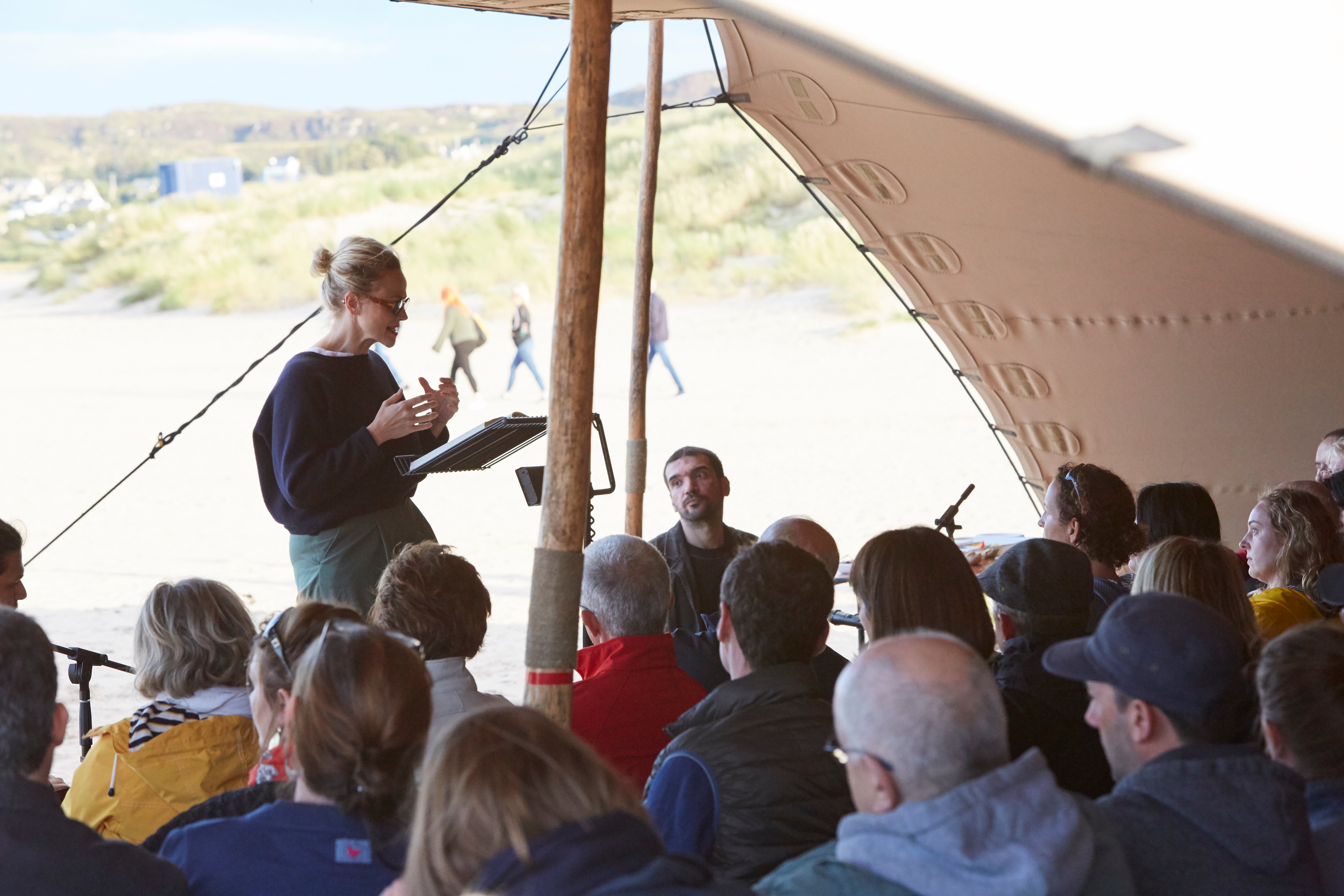
Sally’s concerns about the border have been heightened by Brexit. She’s not the only one. “For us that grew up with it, we know exactly what that border means – it’s not just about the administrative and bureaucratic hurdles,” she says. “The reality is massive social and economic concern over what the impact of Brexit is going to be.”
This border isn’t only physical. It’s also psychological. “Checkpoints are a very emotive issue because, regardless of what that looks like, as soon as you start stopping people before they can move across an invisible line, the impact on somebody’s psyche who has grown up in the Troubles, and has witnessed all of what that meant, is quite profound.”
Checkpoints are a very emotive issue because ... as soon as you start stopping people before they can cross an invisible line, the impact on somebody’s psyche who has grown up in the Troubles is quite profound
Sally grew up in the Troubles. For her, a hard border evokes bad memories. “It harks back very strongly to a darker time in our history, and that’s something nobody wants to go back to.” Her uncle was killed by the IRA in the border town of Magheraveely. “He was killed outside the family homestead. I grew up spending my summers there, watching my grandparents commemorate his death, raising a flag at half mast and laying a wreath on the very spot where he was killed, with the bullet holes still in the shed, and watching my grandfather cry every year writing the commemoration to be put into the newspaper.”
People like Sally are the people who have made peace along the border. “I grew up with the language of peace and reconciliation from my father,” she says. “I remember my father telling me, ‘I would never have wanted anybody else’s brother or mother to feel or experience what we did’.” It’s experiences like these which make the prospect of a harder border such an emotive issue – a border that could yet again give people something to fight for, and fight against.
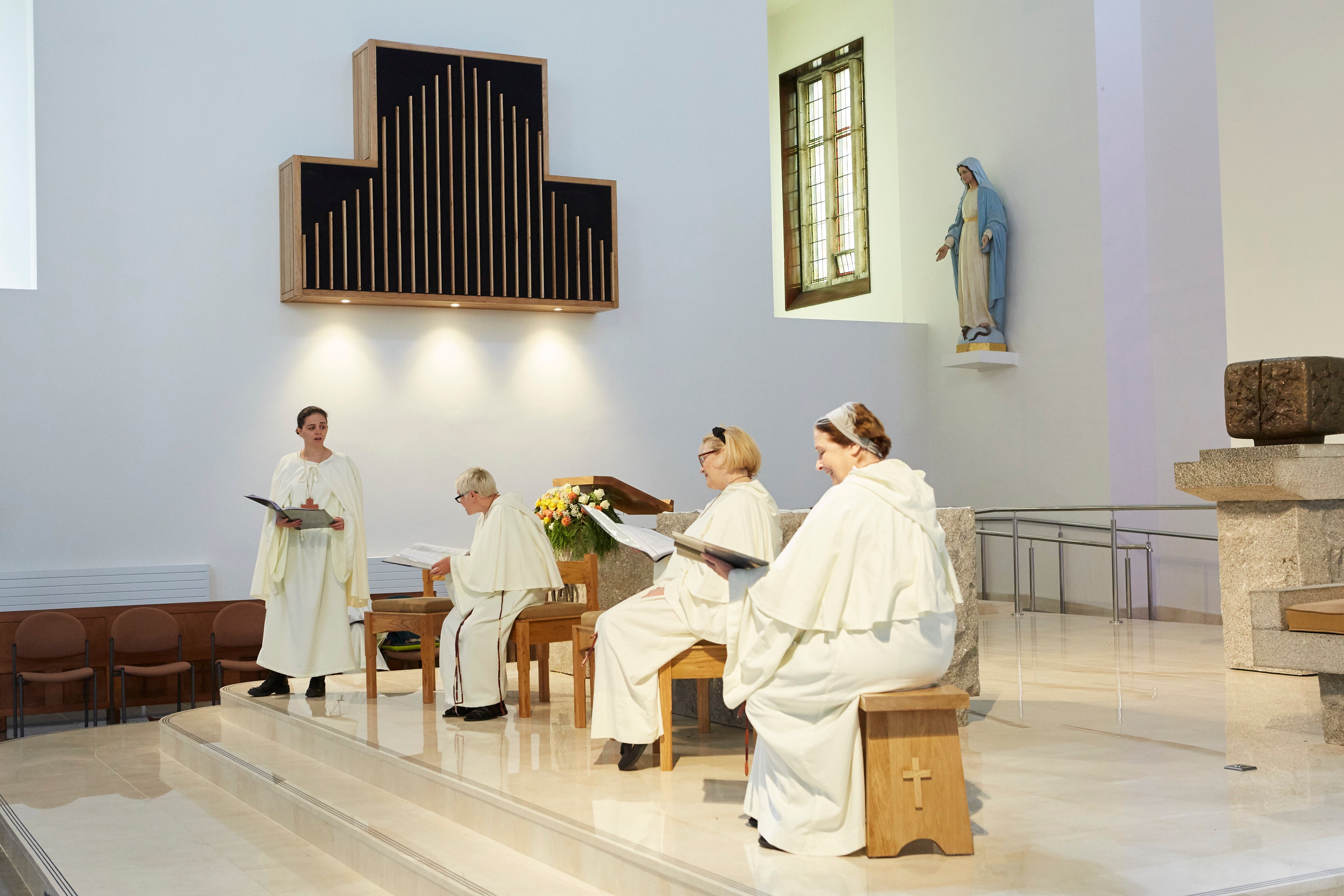
Sally also works with Dylan Quinn, her neighbour in Fermanagh, whose dance company does groundbreaking work with communities on the border. To mark the centenary of partition he’ll be building a cairn, with a stone for each of the local people, from all sides, who died during partition a hundred years ago. As he builds the cairn, he’ll recite a name for each stone, and say something about how they died. This isn’t just a history lesson. It’s about recollection and remembrance. “I’m acknowledging the challenges and the experiences of this community,” he says. “I’m using it as a mechanism to explore our more recent past, and also the risks of our future.”
Dylan was born and raised in Enniskillen and trained at the Northern School of Contemporary Dance in Leeds. He moved back here 20 years ago. He’s known Sally since they were teenagers. He came from the Catholic side of town. They met at a busking festival organised by Enniskillen Together. Their creative collaboration grew out of that reconciliation scheme.
Read More:
“Everything in Northern Ireland still has the mood music of sectarianism behind it, and what we have to do with arts and culture is to kind of soften it,” says Jonathan Burgess.
“Everybody thinks that whenever you declare peace it’s a road to Damascus moment – there’s a flash and everybody who hated everybody yesterday now loves them today. That’s just not the way it is. This is a generational process. It’s an attritional process, to wear down these hatreds over time.”
Artists like Jonathan, and Sean and Liam, and Sally, Carlo and Dylan have done a lot to wear down these hatreds by creating a cultural common ground where reconciliation can take place. Brexit has made their work more difficult, and even more important. With a harder border now emerging between Northern Ireland and the Republic, it’s the relationships they’ve helped to foster which will help to keep the peace.
For more information, visit artsoverborders.com
Join our commenting forum
Join thought-provoking conversations, follow other Independent readers and see their replies
Comments